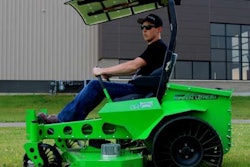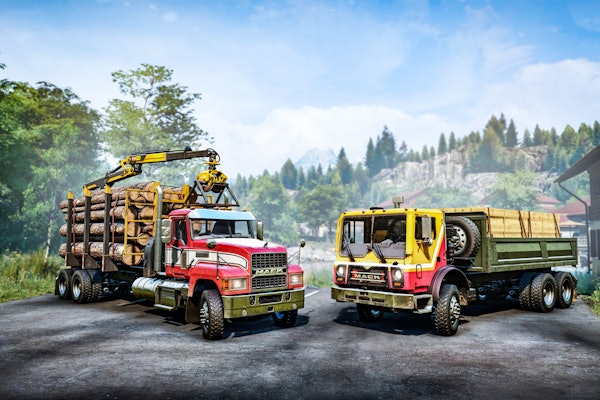
While other experts have been saying this year’s winter will be a warm and wet one, the Farmers’ Almanac disputes this.
“Contrary to the stories storming the web, our time-tested, long-range formula is pointing toward a very long, cold and snow-filled winter,” says Peter Geiger, editor of Farmers’ Almanac. “We stand by our forecast and formula, which accurately predicted the many storms last winter, as well as this summer’s steamy, hot conditions.”
Whichever prediction you prefer, take all of it with a grain of salt as weather forecasting, in general, is still a tricky business, so saying what the weather will be like in January is still fairly fickle.
Although you can’t control the weather, you can control how your company responds to it. Check out some tips on common mistakes you can avoid.
Not having a game plan
Snowstorms do not happen when it’s convenient for you. They hit at inopportune times that could cause you to send crews out to clear roads or properties in the middle of the night.
If you haven’t trained your crews on a plan of attack or if employees are unfamiliar with a property they are clearing, it could result in the job taking longer than planned, destroyed property or damaged equipment.
Long before a storm is even on the radar, you need to have surveyed your snow customers’ properties for obstacles and determined how many employees will be needed to get the job done, along the amount of salt or other deicing material you’ll need.
Choosing the wrong equipment
If you’re new to offering snow removal services, you may think that just any plow will do, but each type of snow plow is better suited for particular jobs. Likewise, you need to have the right-sized equipment for your jobsites.
“For instance, (if) you have a large area that needs to be cleared, smaller equipment will need to make more passes, and will take more time to remove the snow,” says Dan Bitler, with Sebert Landscape based in Bartlett, Illinois. “In this particular case, a larger piece of equipment can clear more snow in less time with less wear and tear.”
When it comes to buying snow equipment, Bitler says to evaluate the safety, cost and added efficiencies of the machine. One of the efficiencies might be being able to get a jobsite cleared faster, freeing up personnel.
He does not advise purchasing used snow removal equipment.
“Buying used snow removal equipment is not always the best idea,” Bitler says. “Simply because you have no insight into any of the problems the machine might’ve had, and when you start to see the problems, you’ve already made the investment and you’re most likely already deep into a job. However, if you do decide to buy used, you should always make sure you purchase from a known and reputable dealer. This decreases the chances of purchasing a faulty machine.”
Not having accurate weather reports
Being caught off-guard when it comes to winter weather can result in more work for you if you weren’t able to get out to a site to conduct anti-icing services in time.
There are multiple sources you can use to monitor the weather, including WeatherBug, Intellicast and AccuWeather. One particular company, WeatherWorks, specializes in providing timely, accurate meteorological data to its clients. Its snow and ice experts can help you in pre-season bid preparation by providing historical weather data for an area, it issues storm alerts 24-48 hours prior to the onset of an event and provides details on the predicted arrival, intensity, duration, accumulation and any other type of critical hazards that may affect your operation.
Not communicating with clients
When there is heavy snowfall, clients are naturally going to be concerned and contacting you, unless you are being proactive and letting them know what you’re planning to do and when.
If you’ve kept your customers in the loop about how you’ve already pre-treated their properties and plan to come out at a certain time, you can save them stress and you the hassle of having to answer multiple phone calls asking all the same thing, “When are the plows coming?”
While you may think the client knows you’re eventually coming to do the job, letting them know when you are onsite or when the job is done is a courtesy they will appreciate and can put their mind at ease.
Not writing clear contracts
There are a number of factors you need to get in writing when negotiating snow contracts with customers. When things are stated explicitly in text, both you and your client know exactly what is covered and who is responsible for what.
One of the major issues to cover in your contracts is liability. Often, landscaping companies are held responsible for any and every accident that occurs on a property. Make it clear that indemnity is only a result of your own negligence.
Being specific as to what your company is responsible for can help manage expectations. Be clear as to what parts of the property you are in charge of clearing and the minimum accumulation standards. Likewise, be sure to mention what you will not do, such as shoveling smaller walkways or cleaning up sand after an event.
Include a section addressing blizzards and your company’s definition of what qualifies as one. Address how your services might change during a large snow event like this and if you are to be paid additionally for handling these unusual situations.
Another big part about snow contracts is deciding whether to use a fixed contract, per push an hourly one.
Fixed contracts tend to either favor the landscaper or the client depending on how little or how much snow falls, but it tends to balance out over the span of the contract and provides the customer peace of mind that their snow and ice removal needs will be covered. Snow caps should be included in fixed contracts to avoid losing too much money during extremely snowy winters.
Per push contracts mean the client will pay for each time snow services are performed, which is a good option for customers when snow is less common in that region.
Hourly contracts are the least profitable with margins around the 20 to 25 percent range. These type of contracts also reduce the incentive to work as efficiently as possible compared to per push or fixed contracts.
The best rule of thumb is to not put your eggs all in one basket and have a mixture of contracts.
“Depending on the year, a third or so of our revenue is on fixed contracts,” says Paul Fraynd, co-owner of Sun Valley Landscaping, based in Omaha, Nebraska. “And then we have a balanced mix of contracts, so that ideally if it’s a heavy winter, your hourly stuff is paying out nicely and your fixed contracts didn’t do as well or vice versa.”











